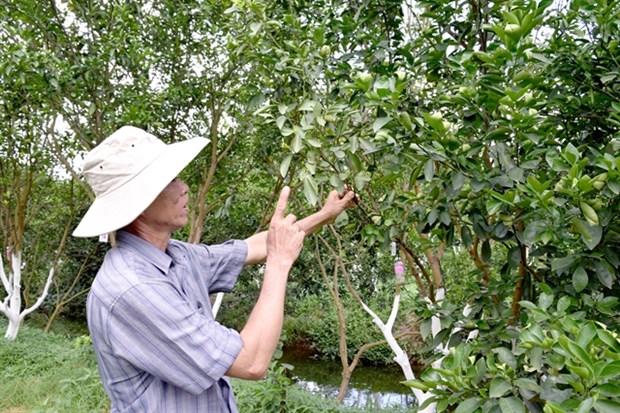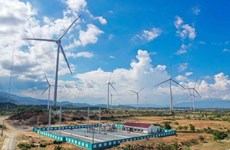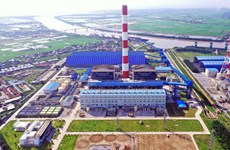Dong Thap preserves endangered pink mandarin
The Mekong Delta province of Dong Thap has approved a project to preserve the specialty pink mandarin of its Lai Vung district, which is facing a threat of dying out, over the next five years.
 An orchard with pink mandarin and sweet mandarin in Dong Thap Province’s Lai Vung District has recovered from dry root rot disease after being treated with lime and organic fertilisers and grasses were grown to keep the soil humid. (Photo: VNA/VNS)
An orchard with pink mandarin and sweet mandarin in Dong Thap Province’s Lai Vung District has recovered from dry root rot disease after being treated with lime and organic fertilisers and grasses were grown to keep the soil humid. (Photo: VNA/VNS)Dong Thap (VNA) – The Mekong Delta province of Dong Thap has approved a project to preserve the specialty pink mandarin of its Lai Vung district, which is facing a threat of dying out, over the next five years.
The 73 billion VND (3.1 million USD) involves growing the fruit on a total area of 546.63ha in the communes of Long Hau, Tan Phuoc, Tan Thanh, and Hoa Long.
The Lai Vung pink mandarin has only one harvest a year - just before Tet (Lunar New Year) - and is one of the favourite fruits during the festival because of its beautiful colour, thin skin and sweet and unique flavour the fact it has few seeds.
It was first grown in the district 50 years ago, with farmers initially planting seeds and later switching to air layering.
The fruit grown in Lai Vung is sweeter than elsewhere because of its unique soil, but in recent years a large number of trees contracted dry root rot disease and died.
The district has around 800ha under the fruit, 300ha less than in 2015, according to its Bureau of Agriculture and Rural Development.
Of this, trees on 782.6ha have the disease.
Nguyen Thanh Hung, deputy chairman of the province People’s Committee, said the project would focus on zoning, using science technologies, training, advocacy, mechanism, farming techniques, seedling production, and using organic fertilisers.
The district plans to treat trees on 198.7ha as they are still growing well despite contracting the disease.
It will help plant trees on 347.92ha in the next three years, providing farmers with inputs for the first two years.
Farmers will be encouraged to use organic fertilisers made from rice straw and animal manure and added with trichoderma fungi to treat the dry root rot disease.
The provincial Department of Agriculture and Rural Development and Can Tho University have successfully trialled treatment of the disease since last year.
They teach farmers how to balance the use of chemical and organic fertilisers, prune disease-affected branches and roots and use bio-products to treat the disease.
Treated trees have recovered 80 – 90 percent, according to the department’s Plant Cultivation Sub-department.
Nguyen Van Day, one of the participating farmers in Long Hau Commune, uses rice straw and cow manure to make organic fertilisers to fertilise his mandarin trees and prevent inundation.
His trees have recovered 90 percent and begun to bear fruit again, he said.
With guidance from agricultural officials, he uses organic fertilisers and this makes the soil spongy and helps cut costs by 40 percent, he said.
Tran Thanh Tam of the sub-department said after learning about the pilot models, farmers balance the use of chemical and organic fertilisers to stabilise the soil texture, make the soil fertile and spongy and enable the growth of useful microorganisms.
Not using a lot of chemical fertilisers unlike in the past also helps farmers reduce costs, he said.
Pink mandarins fetch an average price of 30,000 VND (1.3 USD) a kilogramme at the farm and a mature tree can produce 500kg annually.
Many pink mandarin orchards in Lai Vung also offer tourism services to visitors before Tet, taking advantage of the fact that the ripe pink fruits look beautiful./.












